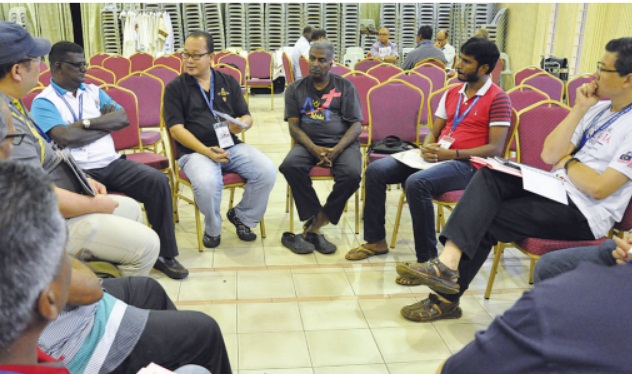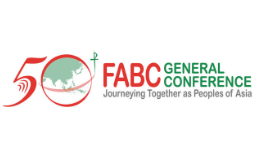Challenges faced by the Malaysian Church
Secularisation is a set of values that contradict Gospel values. Secularisation is the transformation of a society from one that is closely identified.
Jan 26, 2019

Malaysian Catholic Clergy Assembly: DAY 4
19.7.2018
SECULARISATION
What do we mean by secularisation?
Secularisation is a set of values that contradict Gospel values. Secularisation is the transformation of a society from one that is closely identified with religious values to one that is non religious; to a society where people are more man centred rather than God centred.
Signs of secularisation
-- Removal of religious symbols in schools.
-- In liturgy, the use of modern technology, such as LCD projections, has subtly diverted the real focus on God.
-- Relationships today are superficial. People are more individualistic than communal.
How secularisation affects the quality of priestly ministry
-- With the use of modern technology such as the internet, one is over loaded with information, some of which might be fake news or misinformation.
-- Technology can also lead to treating people as objects. We have become impersonal and less communicative with others.
-- Use of modern gadgets such as handphones, TV etc can be addictive, leading to less time spent on prayer and ministry.
-- In ministry to young people, we tend to focus on performance rather than real concern for the young person.
-- Secularisation can challenge the Clergy to be more discerning and see social media as real opportunities and possibilities for education and faith formation.
EVANGELISATION and MISSION WITNESSING
Sharing your experiences in evangelisation and mission
Admit that we are still poor at witnessing in our work of evangelisation and mission
Strengths
-- Finding joy in mission work
-- Most of us are able to communicate well with the lay people and ministry
-- Most of the rural parishioners are very involved and welcoming
-- Collaboration with religious groups and other denominations
-- BECs are well established and well accepted in the rural areas too. Evangelise through the Word of God, strengthen the faith
-- RCIA in preparing for the reception of the sacraments
-- Ministry to the home bound, wake ministers ministering to the sick, dying, and intercessory prayers, bringing comfort and bringing faith back to the family
-- ALPHA programmes benefiting in reaching out to lapsed Catholics
-- Team “Turun Padang” reaching out to the people in the rural areas
-- Migrants ministry,
-- Pilgrimage centres, bringing people of all walks of life and religion together
-- New Evangelisation (kupi - kupi rohani)
-- Ad intra and Ad extra evangelisation emphasising out ward mission to facilitate the encounter between men and God
Challenges
-- Very clergy centred Church: Do as the priest says
-- Difficult to find capable lay leaders ? Need to reach out to the rural areas
-- Need to have frequent celebration of sacraments
-- The parish boundaries are so vast that some outstations are not visited frequently
-- Some of the parishes / outstations only have a small number of parishioners
-- In some areas, priests only gather twice a year. There is a need to have more interactions between clergy
-- Migration to the cities / urbanisation
-- Impediments for receiving the Eucharist due to second marriages / mixed marriages / not con validated marriages
-- Full time catechists needed
-- Difference in culture, language, ideas cause disunity
-- Various levels of commitment of the lay leaders
Suggestions
-- Empower the laity. Have full time paid catechists, pastoral workers,
-- Centralised catechists’ training
-- Appoint hospital chaplains / schools to reduce the work load of priests in the city.
FAITH FORMATION
What is faith formation?
--It is facilitating an encounter with the Lord that is practical, with a proper objective and goal.
-- It has to take into account the challenges and needs of the local Church.
-- It needs to be connected with the people’s experiences at each stage of their faith journey.
-- It needs to be holistic, and point towards Christ.
-- It needs to be relevant. The content of faith formation will not change, but the way it is delivered has to be relevant to the current generation.
Strategies (systematic plans) for faith formation
-- Faith formation is necessary for both the laity and the clergy.
-- As clergy, we have to have a diligent life of prayer, as i will affect how we are forming people. Clergy ourselves have to be convinced about our faith.
-- In the seminaries, the gap between the formators and seminarians needs to be bridged.
-- At the level of the laity, Catholics need to be guidedto encounter, be empowered, be enlightened and live as evangelising people.
-- Focus should be on bringing people into a relationship with the living God by meeting Him in the Scriptures and in the Eucharist. Homilies should inspire witnessing.
-- Catechists need ongoing formations.
-- Faith formation should awaken people’s awareness to social issues.
-- The standard catechetical syllabus does not have flexibility. There has to be a curriculum and presentation thatis inculturated for the various language groups.
-- RCIA is an initial stage of faith formation for those entering the Church. It can be an inspiring journey when itis done well.
-- In West Malaysia, we need some concrete plans to provide faith formation that is specifically catered to the East Malaysian people here.
-- Clergy need to be available and present on simple occasions such as family gatherings and youth outings.
-- Faith formation must come after listening to the needs of the people.
DISPARITIES BETWEEN EAST AND WEST M’SIA
a. Cultural
-- Those in the East are more culturally connected with the Malays, especially in the language used and the environmentlived in.
-- Those in the East are more close knit in their relationship with one another.
b. Economy
-- Prices of goods and the cost of living is higher in the East.
-- Infrastructure such as roads, varsities, hospitals are more advanced in the West.
-- In the West, salaries and job opportunities are greater than in the East.
c. Politics
-- Those in the East are now more ready to demand greater autonomy and power.
-- There is a better working relationship between State and the Church in the East.
d. Education
-- The standard of education is higher in West Malaysia.
-- The people in the West are more knowledgeable and more exposed to globalisation, migration and conflicts.
e. Mindset, Conduct and Attitudes
-- There is a sense of superiority and a patronising attitude in the West towards those in the East.
-- In East Malaysia, the parents are fearful that their children will be converted when they go to the West for education orwork.
-- There is greater harmony in the East than in the West.f. Church
-- There are greater challenges in the East for pastoral ministry because of inferior infrastructure such as roads and greater geographical distances to cover.
-- There is greater freedom of expression and the usage of religious terminology such as ‘Allah” in the East.
-- There is easier availability and approval for lands for burial grounds, buildings in the East
-- There are more opportunities for missionary works in the East.
-- Catechesis and faith formation opportunities are more available in the West.
VOCATION
Is my priesthood / diaconate still a vocationor has it become a job?
-- God’s call initiates and sustains our vocation.
-- It is vocation when it is sustained and re kindled with the love for the people.
-- Vocation goes beyond fixed time duties but it can endup as a job when it loses its focus.
-- Too much work could reduce it to a job if we are not connected with the people.
-- The ministry of the priesthood is a combination of both since the priest is a sign of Christ for others.
-- Only a vocation can give joy to the mission and ministry of the priesthood.
-- For a permanent Deacon who has a job in the secular world, this distinction is seen more clearly.
How do I inspire young people towards priestly or religious vocation?
-- By being a witness and being available for the young.
-- By giving a human face to the priesthood and not a perfect or authoritarian outlook.
-- By sharing our mission and vocation stories.
-- By accompanying the young and helping them to discover and encounter Christ.
-- By spiritual direction.
--By creating appreciation and awareness through vocation camps and talks.
-- Through the homilies the clergy can inspire the young to respond to the needs of the times.
-- Through affirmation that the young people are doing God’s work when they serve in the church ministries.
-- By promoting vocation through mission projects.







Total Comments:0